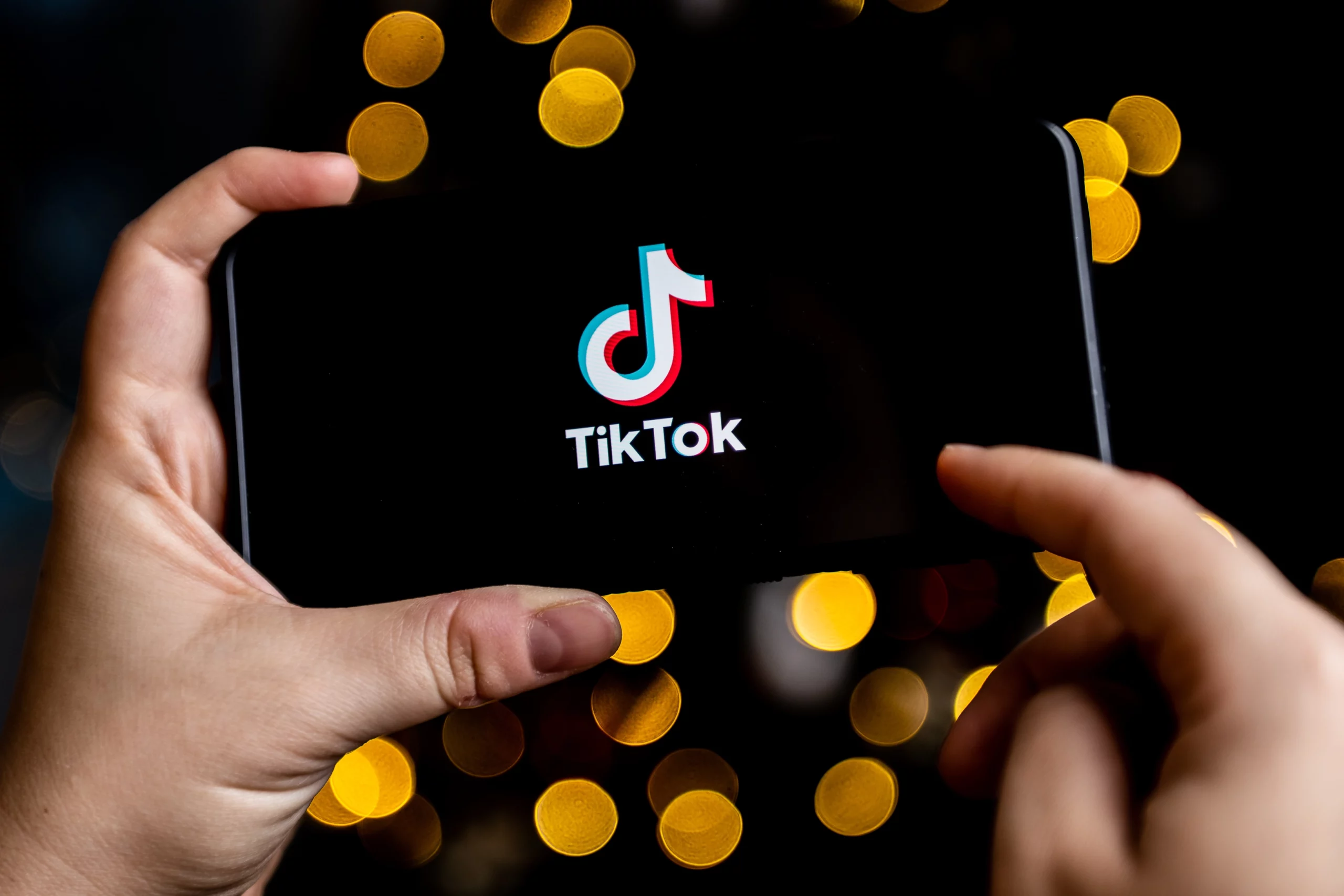


July 31, 2023
Eyes4Research
In the ever-evolving world of data analysis, a groundbreaking revolution is underway in the form of AI. With the power of AI, data analysis has transcended its original limitations, opening up a new era of insights and possibilities.
In an exciting collaboration, Eyes4Research has teamed up with Signoi, LTD. to dive into the transformative potential of AI-driven data analysis, to explore how this technology is reshaping industries, and empowering decision-makers to make informed choices like never before.
Recently we got access to the latest feature in ChatGPT (using the 4.0 model), it now has the ability to write and execute Python programs in a “sandbox” environment, and we feel it’s a revolution in data analysis.
It’s a revolution in the dreaded “paradigm shift” way, we believe anyway – given that Kuhn was never terribly clear what exactly a paradigm was.
Let’s illustrate this with the results from a survey we ran recently on attitudes to AI. The new chatGPT 4 allows you to upload files up to 50MB in size, this includes CSV format files. We uploaded the raw data file (some 43MB), with just over 2000 completed interviews. The survey has an open end question that we have analyzed for sentiment and we used our standard archetypes (Jungian, Schwartz, and Shadows) to score the response to the open-ended question as well.
We have a variable in the dataset called “fsentiment” which is the general sentiment score of the text. First, we asked it to analyze the relationship between the variable “Social_Grade” (for the Americans, yes, we are still obsessed with class) and fsentiment. And we do mean asked as in “What is the relationship between the variable “Social_Grade” and fsentiment ?”. This is what it said:
“The correlation coefficient between the ‘Social_Grade’ and ‘fsentiment’ variables is approximately -0.063. This suggests a weak negative linear relationship between the two variables.
In other words, there is a slight tendency for ‘fsentiment’ to decrease as ‘Social_Grade’ increases (given the numerical coding used for ‘Social_Grade’). However, the relationship is weak and may not be practically significant.”
Note that it had worked out it needed to convert the “Social_Grade” variable to a number as it was a categorical. But we thought using ANOVA would be better so we told it to do that, we just said “Use ANOVA”.
It ran the analysis and said:
The one-way ANOVA test evaluates whether there are significant differences in the means of ‘fsentiment’ across the different categories of ‘Social_Grade’.
“The results of the ANOVA test are as follows:
The p-value is greater than the commonly used significance level of 0.05, which means we fail to reject the null hypothesis that the group means are equal. In other words, the test did not find a statistically significant difference in ‘fsentiment’ across the different ‘Social_Grade’ categories.”
Actually, it said more than this, but we will stop here. The new code generation facility enables a range of analyses to be executed via simple English statements, such as “use ANOVA”. It leverages the range of libraries that are available in Python that can perform statistical analyses, it doesn’t have all the possible libraries but it does seem to have a good range, with some surprising inclusions.
You can also ask for graphics to be generated, so we said:
“show me the relationship between these variables: jung_rebel_mm3 jung_jester_mm3 jung_lover_mm3 jung_caregiver_mm3 jung_everyman_mm3 jung_innocent_mm3 jung_ruler_mm3 jung_sage_mm3 jung_magician_mm3 jung_hero_mm3 jung_creator_mm3 jung_explorer_mm3 and fsentiment”
These are our proprietary archetype scores for Jungian archetypes based on the open-ended text question, it then printed out the correlations between fsentiment (the variable with the sentiment score in it) and the Jungian variables.
We then asked it to: “make a polar plot of these results”, and I got (eventually, it tried 5 times to produce this!) this plot:
But we thought it could do better, so we then used my favorite chatGPT prompt, we said: “Make it more pretty” and that was the only command we gave it. And it did, below is the “pretty” version of the polar graph.
It also gave an account of what it had done:
“Here is an enhanced version of the polar plot, which visually represents the correlations between ‘fsentiment’ and the selected Jungian archetype variables:
As before, each point on the plot corresponds to a variable, and the distance from the center of the plot indicates the strength and direction of the correlation (with positive correlations extending toward the top of the plot and negative correlations extending toward the bottom).
From the plot, we can see that ‘jung_everyman_mm3’, ‘jung_magician_mm3’, and ‘jung_creator_mm3’ have the highest positive correlations with ‘fsentiment’, while ‘jung_rebel_mm3’ has a slight negative correlation.
Please note that this is a visual representation of the correlation values calculated earlier, and the same caveats apply: these are measures of linear association, not causation, and there may be other variables or factors at play.”
It’s fair to say that it can be a bit prolix, but we think that could be easily rectified by simply telling it to be “less prolix”, similar to telling it to produce “more pretty” graphics.
So is chatGPT a perfect data analyst? Far from it – it stumbles often, sometimes with some very basic Python programming errors, but it keeps trying until it gets it right. In this respect, it is very similar to a human data analyst, except that it does keep trying until it gets what it thinks is the correct result.
We could have done all this analysis much, much more quickly by ourselves, then again we have decades of experience in software development from assembly language to Python and R, and we have had years of formal courses in statistics.
Making it more pretty…
This is a fantastic tool, it really empowers users to generate complex analyses with simple English commands. With simple English commands, you can generate complex analyses. And it will also generate a report if you want one! Just ask it. And you don’t need to get into the details of what you want, you could just say “Find the relationships between the continuous variables and the fsentiment variable” and it would try to do that. And it could then write a paper for you about the results of the analysis. And probably “make it more pretty” if you don’t like the way it looks.
It doesn’t take much imagination to see the effect this kind of system could have (and will have) on the market research world – and far beyond that.
And there is now a stark choice: embrace this technology or die.
It’s that simple – and we can’t “make it more pretty”.
About Signoi
Signoi is a unique AI-powered software that automatically decodes unstructured data into patterns of meaning. It is used by leading brands and agencies on three continents to surface hitherto inaccessible insight and foresight for every use case you can think of.

July 28, 2023
Eyes4Research
Market research plays a pivotal role in understanding consumer behavior, consumer preferences, and market trends. One crucial aspect of conducting successful surveys is the use of incentives.
Incentives act as powerful motivators for survey participation, ensuring higher response rates and more accurate data. Here, we will explore 5 reasons why survey incentives are effective in market research.
Consumers’ time and opinions are valuable. Offering incentives creates a sense of value exchange, demonstrating that their contribution is appreciated. By offering something tangible in return to consumers, such as a gift card, a discount, or an entry into a prize drawing, survey participants feel acknowledged for their time and effort. This increases their willingness to complete the survey.
Incentives provide individuals with a clear motivation to participate in surveys. Monetary or non-monetary rewards act as a catalyst, encouraging potential survey respondents to invest their time and attention.
When people perceive a direct benefit from taking part in a survey, they are more likely to engage and provide thoughtful responses.
Life is busy for everyone, and survey invitations often compete for attention alongside other priorities in the lives of consumers. Incentives help overcome this inertia and make surveys stand out.
When presented with an opportunity to gain something valuable, individuals are more inclined to prioritize and allocate time for completing the survey, even with a hectic schedule.
Survey incentives contribute to the fairness of the research process. Survey participants may perceive their efforts as being acknowledged and compensated appropriately for their contribution.
This fairness fosters positive perceptions of the research organization or brand conducting the survey, which can enhance the likelihood of future participation and cooperation.

Incentivizing surveys encourage respondents to provide thoughtful and accurate answers. Survey participants are more likely to take their time, reflect on their opinions, and provide detailed responses when they know their efforts will be rewarded.
This leads to higher-quality data, allowing researchers to gain deeper insights and make more informed decisions.
Survey incentives play an essential role in market research, significantly impacting response rates, data quality, and participant engagement. By acknowledging the value of participants’ time and opinions, survey incentives create a win-win situation, benefitting both researchers and survey respondents.
The success of survey incentives lies in striking a balance between providing sufficient motivation and maintaining the integrity of the research. With careful planning and implementation, survey incentives can maximize the value and impact of market research endeavors.
Read more about market research on the Eyes4Research blog. Eyes4Research also has everything you need to collect high-quality insights from consumers. Our panels are comprised of B2B, B2C, and specialty audiences ready to participate in your next research project. Learn more about our specialty panels here.
About the author:
An industry leader and influencer – Rudly Raphael specializes in all aspects of research logistical design involving quantitative methodology, implementing internal system infrastructure to streamline business processes, channelling communication and developing innovative research solutions to ensure Eyes4Research remains a competitive force in the marketplace. An entrepreneur, inventor (patent holder), blogger and writer – his articles have been published in various magazines such as Medium, Ebony Magazine, Bussiness2Community and also cited in various journals and academic publications.

July 27, 2023
Eyes4Research
In our digital age, incorporating video content has become a vital component of any successful media strategy. From social media campaigns to corporate branding, the impact of video is undeniable.

First off, video content allows businesses and creators to tell compelling stories in a visually engaging manner. Whether it’s a product demo, behind-the-scenes footage, or customer testimonials, videos can evoke emotions and build strong connections with the audience, leaving a lasting impression.
Social media platforms prioritize video content, making it more likely to reach a broader audience. Engaging videos capture audiences’ attention, encouraging them to spend more time on your content, and increasing the chances of them sharing it with their networks, thus, amplifying your brand’s reach.
Incorporating video content on websites and social media can positively impact SEO efforts. Search engines often prioritize video results, improving a website’s ranking and attracting organic traffic, ultimately boosting visibility and attracting potential customers.
Video content is incredibly versatile and adaptable to various platforms and mediums. From short-form videos for social media to longer narratives for websites or presentations, videos can be tailored to suit specific goals, audiences, and platforms.
Video content can significantly impact conversion rates. Product videos, for example, can showcase the benefits and features of a product, leading to higher purchase intent among audiences. Brands that include video content in their marketing strategies tend to see higher conversion rates compared to those that rely solely on text-based content.
Videos allow brands to showcase the people behind the scenes, adding a human touch to the brand. By featuring employees, company culture, and values, brands can create a sense of authenticity, trust, and transparency, encouraging a stronger bond with their audience.
Finally, Live video streaming has gained immense popularity, enabling real-time interaction with audiences. Brands can conduct live Q&A sessions, product launches, or behind-the-scenes tours, providing an opportunity to directly engage with followers and respond to their questions, building a sense of community and loyalty.
Video has the power to captivate, educate and emotionally connect with audiences in ways that text alone cannot achieve. Embracing the dynamic world of video content opens up countless opportunities to boost brand awareness, enhance engagement, and ultimately drive success in the evolving media landscape.
Read more about media and marketing on the Eyes4Research blog. Eyes4Research also has everything you need to collect high-quality insights from consumers. Our panels are comprised of B2B, B2C, and specialty audiences ready to participate in your next research project. Learn more about our specialty panels here.
About the author:
An industry leader and influencer – Rudly Raphael specializes in all aspects of research logistical design involving quantitative methodology, implementing internal system infrastructure to streamline business processes, channelling communication and developing innovative research solutions to ensure Eyes4Research remains a competitive force in the marketplace. An entrepreneur, inventor (patent holder), blogger and writer – his articles have been published in various magazines such as Medium, Ebony Magazine, Bussiness2Community and also cited in various journals and academic publications.

July 25, 2023
Eyes4Research
Business travel has long been an essential aspect of corporate operations, enabling companies to expand their horizons and build valuable connections. In recent years, the way businesses approach travel has undergone significant change, especially in the wake of the pandemic.
As organizations increasingly prioritize employee well-being, while simultaneously trying to manage costs and enhance convenience, a more thoughtful and strategic approach to business travel emerges. There are 4 ways that business travel is changing, with a specific focus on employee well-being, cost-effectiveness, and convenience.
In the immediate aftermath of the pandemic and the way it upended how employees think about their jobs, employers have come to recognize that a tired and stressed workforce is less productive and less engaged. Consequently, employee well-being is now more of a priority in business travel considerations.
Companies are taking measures to minimize the impact of travel-related stress, such as providing more flexible travel options, offering wellness programs on the road, and ensuring adequate time for rest and recovery. By making more of an effort to center employee health, companies not only encourage a more productive workforce but also enhance employee satisfaction and loyalty.
Cost management remains a crucial aspect of any business operation, including travel. However, the emphasis has shifted from solely cutting expenses to finding a balance between cost and value. Organizations are now investing in more strategic travel solutions that optimize expenses without compromising the quality of travel.
By leveraging travel data and analytics, businesses can negotiate better rates with travel partners, utilize loyalty programs effectively, and make informed decisions to reduce overall costs.
Technology continues to play a significant role in shaping the evolution of business travel. From booking platforms and travel management apps to virtual conferencing tools, companies are embracing technological advances to boost convenience and efficiency.
Virtual meetings have become commonplace, reducing the need for excessive travel while allowing employees to stay connected with clients and colleagues worldwide. In addition, automation streamlines travel-related processes, freeing up time for employees to focus on core business objectives.
One size does not fit all when it comes to business travel. Recognizing the diverse needs and preferences of their workforce, companies are offering personalized travel options. This may include selecting travel accommodations tailored to individual preferences, allowing employees to extend stays for personal time, or offering the choice of transportation options. By incorporating flexibility into travel policies, businesses empower their employees to manage work-life balance more effectively.
The evolving landscape of business travel is marked by a shift towards an employee-centric approach. Companies are increasingly prioritizing employee well-being, recognizing that a content and rested workforce translates into better business outcomes.
At the same time, cost and convenience remain essential factors, and businesses are leveraging technology and data to optimize travel expenses and streamline travel processes.
Read more about the travel industry on the Eyes4Research blog. Eyes4Research also has everything you need to collect high-quality insights from consumers in the travel audience, including business travelers. Our panels are comprised of B2B, B2C, and specialty audiences ready to participate in your next research project. Learn more about our specialty panels here.
About the author:
An industry leader and influencer – Rudly Raphael specializes in all aspects of research logistical design involving quantitative methodology, implementing internal system infrastructure to streamline business processes, channelling communication and developing innovative research solutions to ensure Eyes4Research remains a competitive force in the marketplace. An entrepreneur, inventor (patent holder), blogger and writer – his articles have been published in various magazines such as Medium, Ebony Magazine, Bussiness2Community and also cited in various journals and academic publications.

July 24, 2023
Eyes4Research
Currently, actors under the SAG-AFTRA union are on strike, which means not promoting their movie at events, appearing in any new roles, and many other things. But what are the specifics under their restrictions, why are they striking, and how does it connect to AI?
What is SAG-AFTRA?
SAG-AFTRA is a labor union that represents actors and general media professionals, helping them negotiate for better wages and working conditions in the event that they are unreasonable/unlawful. Not just big name millionaire actors, but small actors trying to break into the industry often find it beneficial to join unions for the reasons stated, and boycotting for higher wages benefits them more than it does the Matt Damons and Tom Cruises of the industry. The union was born in a merger of two established unions, the Screen Actors Guild (1933-2012) and the American Federation of Television and Radio Artists (1937-2012). SAG-AFTRA currently has upwards of 100,000 members.
Events Leading up to the Strike
Last month, under the conditions that their negotiating committee would not reach an agreement on their new contract with powerful Hollywood studios, SAG-AFTRA voted to go on strike. In late June, upwards of a thousand actors signed a letter threatening to strike, including A-listers like Rami Malek and Meryl Streep.
Negotiations that the union proposed to AMPTP (the Alliance of Motion Picture and Television Producers) included limiting the use of self-tape auditions (due to potential bias towards better camera and audio quality amongst audition participants) and issuing residuals for streaming viewership.
On July 14, the union announced at a press conference its decision to go on strike after their agreements were not met, following the laying out of details of the strike. This would be the first strike involving actors in the television and film industry since 1980.
AI in Film
One of the issues discussed in the strike was the use of AI-replicated digital likenesses of actors. A portion of the statement that SAG-AFTRA made depicting AMPTP’s stance on the issue (which the latter denies) is as follows, “We want to be able to scan a background performer’s image, pay them for a half a day’s labor, and then use an individual’s likeness for any purpose forever without their consent”. This caused outrage among many actors on social media, as the issue of appropriate payment for especially lower-ranking actors is one that has existed for a long time. Most entry-level actors don’t make nearly enough from one role to live off of, so many have to fit auditions, headshots, and other things in between one or two jobs.
This hit a nerve with a lot of people likely as a result of the increased use of AI in movies and TV shows, like the de-aging of some actors and the AI generated artwork in the opening title sequence in Marvel’s new show, “Secret Wars”. The ethical issue regarding AI art is a similar one, as many artists feel their art is being stolen from search engines to create this art, and some artists who do commissions express concern over the possibility of losing customers who want custom art commissioned. The attitudes of digital artists and actors are similar enough, both parties wanting to get full credit and payment for work they create.
Terms of the Strike
The terms of the strike that SAG-AFTRA proposed included actors not being able to promote their projects at film festivals or events, on social media, do interviews, and attend premieres. So pretty much any public promotion of films or shows from the actors is off the table.
Even promotional collaborations posted on social media have a disclaimer in their posts “filmed before the strike”. So, for however long this strike lasts, don’t expect to see any newly recorded media interviews with your favorite actors.
About the author:
Akili Raphael is a third-year student at DePaul University. He’s also an author and published his first book when he was only 10 years old. He is well versed in media topics such as animation, filmmaking, and is active in the online video game and sports communities. In his free time, he keeps his overflowing creativity in check by writing, creating art in various mediums, making short films, and practicing martial arts. Always interested in learning new things and sharing ideas, he considers himself a student of life above all else.

July 21, 2023
Eyes4Research
The educational landscape witnessed a significant transformation in recent years with the rise of online degrees and certification programs. As technology advances, traditional brick-and-mortar institutions face competition from virtual classrooms and digital platforms. Here are some reasons why online education is growing in popularity, its advantages for students, and its impact on the future of learning.
Accessibility and Flexibility
Online degrees and certification programs have revolutionized access to education. Geographical barriers no longer hinder individuals from pursuing their desired courses. With only an internet connection, students can access quality education from renowned institutions from around the world. In addition, online programs offer flexible schedules, allowing students to study at their own pace, shaping their coursework around other commitments like work or family.
Diverse Course Offerings
One of the major advantages of online education is the wide variety of courses and programs available. Students can choose from a range of disciplines– from traditional subjects like business and psychology to specialized fields like data science or digital marketing. This diversity caters to the specific needs and interests of students, ensuring they can pursue their passions or acquire the skills required in the ever-evolving job market.
Cost-Effectiveness
Online degrees and certification programs often come at a lower cost compared to traditional on-campus education. Students can save money on commuting, accommodations, and other expenses associated with in-person attendance. Additionally, many online programs offer financial aid and scholarships, making education more affordable and accessible to a broader population of would-be students.
Industry Relevance
The rise of online degrees and certification programs can be attributed to their alignment with industry demands. Employers increasingly recognize and value online credentials, provided they are earned through reputable institutions. Online education allows professionals to upskill or reskill without interrupting their careers, which enhances their employability and helps them keep pace with the changing job market.
Technological Advances
Technology has significantly improved the quality of the online learning experience. Interactive multimedia resources, virtual simulations, and collaborative platforms facilitate engaging and immersive learning environments. In addition, AI-powered adaptive learning systems personalize the educational journey, tailoring content to the individual needs of students and optimizing the learning process.
The growing popularity of online degrees and certification programs has ushered in a new era of education, transforming the way people learn and acquire qualifications. Online education is empowering students worldwide, democratizing access to knowledge, and shaping the future of learning.Stay current on the changing education landscape with the Eyes4Research blog. Eyes4Research also has everything you need to collect high-quality insights from educators. Our panels are made up of B2B, B2C, and specialty audiences ready to participate in your next research project. Learn more about our specialty panels here.
The Rise of Online Degrees and Certification Programs
The educational landscape witnessed a significant transformation in recent years with the rise of online degrees and certification programs. As technology advances, traditional brick-and-mortar institutions face competition from virtual classrooms and digital platforms. Here are some reasons why online education is growing in popularity, its advantages for students, and its impact on the future of learning.
Accessibility and Flexibility
Online degrees and certification programs have revolutionized access to education. Geographical barriers no longer hinder individuals from pursuing their desired courses. With only an internet connection, students can access quality education from renowned institutions from around the world. In addition, online programs offer flexible schedules, allowing students to study at their own pace, shaping their coursework around other commitments like work or family.
Diverse Course Offerings
One of the major advantages of online education is the wide variety of courses and programs available. Students can choose from a range of disciplines– from traditional subjects like business and psychology to specialized fields like data science or digital marketing. This diversity caters to the specific needs and interests of students, ensuring they can pursue their passions or acquire the skills required in the ever-evolving job market.
Cost-Effectiveness
Online degrees and certification programs often come at a lower cost compared to traditional on-campus education. Students can save money on commuting, accommodations, and other expenses associated with in-person attendance. Additionally, many online programs offer financial aid and scholarships, making education more affordable and accessible to a broader population of would-be students.
Industry Relevance
The rise of online degrees and certification programs can be attributed to their alignment with industry demands. Employers increasingly recognize and value online credentials, provided they are earned through reputable institutions. Online education allows professionals to upskill or reskill without interrupting their careers, which enhances their employability and helps them keep pace with the changing job market.
Technological Advances
Technology has significantly improved the quality of the online learning experience. Interactive multimedia resources, virtual simulations, and collaborative platforms facilitate engaging and immersive learning environments. In addition, AI-powered adaptive learning systems personalize the educational journey, tailoring content to the individual needs of students and optimizing the learning process.
The growing popularity of online degrees and certification programs has ushered in a new era of education, transforming the way people learn and acquire qualifications. Online education is empowering students worldwide, democratizing access to knowledge, and shaping the future of learning.Stay current on the changing education landscape with the Eyes4Research blog. Eyes4Research also has everything you need to collect high-quality insights from educators. Our panels are made up of B2B, B2C, and specialty audiences ready to participate in your next research project. Learn more about our specialty panels here.

July 20, 2023
Eyes4Research
As technology continues to change how we entertain ourselves, new frontiers are opening up in various industries, including the world of music. Virtual Reality (VR) and Augmented Reality (AR) have emerged as transformative tools, revolutionizing the way we experience music.
From immersive concerts to interactive music production, the integration of VR and AR has opened exciting possibilities for artists and fans alike. Here are 4 ways VR and AR are reshaping the music industry and what the future holds for this modern mashup.
VR has the remarkable ability to transport us to virtual worlds, and it has significantly impacted the live concert experience. With VR, music lovers can attend concerts from the comfort of their own homes, feeling as if they are physically present in the crowd.
Artists can leverage this technology to reach global audiences without limitations, expanding their fan base and generating new revenue streams. VR concerts provide an immersive and interactive environment, allowing fans to interact with virtual avatars of their favorite artists, create personalized playlists, and even enjoy backstage experiences.
Augmented reality brings a new layer of interactivity to the music industry, enhancing fan engagement and creating unforgettable experiences. AR-powered mobile apps enable fans t scan album covers or concert posters and unlock exclusive content, such as behind-the-scenes footage, 3D animations, or interactive lyrics.
AR filters and lenses allow fans to virtually try on artist merchandise, share customized visuals on social media, and participate in AR-driven contests or challenges. This interactive element creates a deeper connection between artists and their fans, fostering loyalty and driving the creation of fan-generated content.
VR is not limited to concert experiences; it has also found its way into the music production process. Artists and producers can immerse themselves in virtual studios, where they can experiment with various instruments, effects, and visualizers in a virtual environment.
VR music production tools offer a tactile and intuitive way to create music, enabling artists to compose, mix, and master their tracks in an immersive setting. This innovative approach enhances creativity, breaks traditional barriers, and pushes the existing boundaries of music production.
The integration of VR and AR enables collaborative experiences between artists and fans, breaking down the limitations of physical distance. Artists can perform live in virtual venues, where fans from around the world can join in real-time, interacting with the artists and with each other. These cross-reality performances blur the lines between physical and virtual spaces, creating a sense of community and inclusivity. Furthermore, artists can collaborate remotely, sharing VR and AR workspaces to create music together, regardless of their geographical locations.
The integration of Virtual Reality and Augmented Reality has ushered in a new era for the music industry, transforming the way we consume, create, and engage with music. From immersive VR concerts that transcend physical boundaries to interactive AR experiences that deepen fan engagement, artists and fans are embracing this technological fusion to create and enjoy music in innovative ways. The future holds even more exciting possibilities, as technology continues to advance and shape the way we experience and appreciate music.
Read more about social media and marketing on the Eyes4Research blog. Eyes4Research also has everything you need to collect high-quality insights from consumers who are active on social media platforms. Our panels are comprised of B2B, B2C, and specialty audiences ready to participate in your next research project. Learn more about our specialty panels here.

July 17, 2023
Eyes4Research
Every youth generation has its own styles and attributes that affect greater society, and in recent decades those styles have been driven by technology trends. Generation X helped make email and the World Wide Web popular and more accessible, while Millennials played a role in bringing the smartphone and social media into the mainstream. Today, Generation Z, or the “Zoomers” as they are often called, are doing their part in driving tech trends by making the social media app TikTok a ubiquitous part of society. During all of those previous tech-trends, forward thinking brands were there to take advantage, and how brands react to the rise of TikTok, particularly how it relates to younger consumers, may play a key role in the retail landscape in the coming years.
Chances are you’ve probably heard about TikTok, but if you’re over the age of 40 you may know little about it. TikTok is a short-form video hosting service that allows users to upload homemade videos to their accounts that are then made public for other TikTok users to see. TikTok is sometimes considered a social media platform, but it differs drastically from standard platforms such as Facebook and Twitter in its form and purpose – video trumps written text on TikTok. The users of TikTok also have a different profile than those who use the other social media platforms. Facebook has increasingly become social media for older people, while Twitter is becoming the domain of middle-age Millennials and Gen Xers, but TikTok is by far the most youth driven of all social media platforms: 41% of its users are ages 16 to 24.
The numbers present a plethora of opportunities for brands to harness the buying power of the younger generation. And despite some talk in Washington and various state capitals of banning TikTok, it only appears to be gaining more momentum as a cultural force. So let’s examine how TikTok rose to prominence, why young consumers like it, how brands can take advantage of this trend, and what advantages consumers can expect in the future.
From Social Media to TikTok
Although TikTok isn’t considered a true social media platform by some experts, it wouldn’t have been possible without the rise in popularity of social media. The explosion of social media platforms took place in the early to mid-2000s, when the internet became more affordable and accessible to a greater part of the population, but the idea was born much earlier. The first online social communities began in the 1980s, when the vast majority of the people on the earliest forms of the internet, such as ARPANET, were techies, academics, and government employees. These early net denizens formed bulletin board systems (BBS), which offered message boards and chatrooms where liked minded people could meet. Social media remained relegated to the technology fringes for most of the ‘80s until the World Wide Web was invented in 1989.
After computer scientist Tom Berners-Lee invented the World Wide Web and released it to the public in 1991, it changed nearly every aspect of our world, including how people form social groups. As access to and popularity of the internet grew in the 1990s, tech entrepreneurs began taking advantage of the new paradigm of social networking. Classmates.com went online in 1995, becoming one of the first successful social media platforms, but it would be a few more years before the technology, as well as people’s attitudes, caught up to the idea. The social media explosion began in 2003 when Myspace went online, followed by Facebook in 2004, YouTube in 2005, and Twitter in 2006. This wave of social media platforms set the table for TikTok to take the next generation by storm.
The engineers at Chinese company ByteDance saw what worked and what didn’t with the early social media platforms and released Douyin in September 2016 to the Chinese population. Douyin was an immediate hit with younger people, as it straddled the line between social media and content creation. ByteDance executives knew they were on to something big, so the international version of Douyin, TikTok, was launched in 2017 and later merged with the Chinese social media app, Musical.ly.
TikTok Takes Off
TikTok was released to relatively little fanfare and its early user numbers indicate that its success was never assured. The app only had 55 million users in 2018, but that number exponentially increased to one billion in the summer of 2021. The pandemic certainly played a role in TikTok’s widespread adoption, but it had been downloaded 693 million times in 2019 and 850 million times in 2020, indicating that it was taking off before the lockdowns. Further numbers show how TikTok has quickly disrupted the social media space.
American technology company, Cloudfare, ranked TikTok as the most popular website of 2021, and in 2022 TikTok reached nearly 1.5 billion users. TikTok also reported revenue of $9.4 billion in 2022, which was almost double from the previous year. So, TikTok is clearly on the rise and has disrupted the social media space, but not everyone is happy with the situation, which could affect the its trajectory as well as brands associated with it.
Most of the organized resistance to TikTok has come from governments. The Pakistani government banned TikTok in 2019, which was followed by its rival neighbor, India, banning the app in 2020. India’s TikTok ban was challenged in the courts but upheld in 2021. In the United States, TikTok has been targeted by Republicans at the federal and state levels, who argue that it is used by the Chinese Communist Party to collect information on American citizens, but to date there have been no major anti-TikTok legislation initiated and it remains among the most popular social media platforms in the world.
So, in the face of sometimes intense government pressure, the obvious question is: why has TikTok become so popular so quickly? The answer is multi-tiered, yet somewhat simple much like the app. TikTok posts are quick, flashy, and catchy, which has become a hallmark of Generation Z, and there is plenty of money that can be made on the app by popular influencers. Influencers who produce popular content and have the ability to manipulate the algorithms by putting their content at the top of users’ suggestions have found immense success on the platform, which brings us to how brands can use TikTok to connect with their consumers.
Brands, Consumers, and TikTok
TikTok’s surge can create plenty of opportunities for companies that are willing to understand this unique social platform and its users, which in turn will give more chances for consumers to learn about specific brands. The TikTok algorithm is more user friendly than many other social media platforms, with its “For You” page (FYP) bringing users videos similar to those they’ve watched or liked, as with YouTube. And also similar to YouTube, brands can utilize this by creating content in the form of short, catchy video clips that explain their products, sometimes using notable influencers to showcase products. This is a specific form of omnichannel marketing that will likely become even more popular in the future.
It should also be noted that in this early stage of TikTok marketing, the brands that do the best on the platform are those that align with TikTok’s do-it-yourself style. There is very little traditional advertising done on Tiktok, with the majority coming from the brands and their content creators. TikTok also has the “creator fund,” which is a multi-billion dollar program whereby funds are distributed among creators based on the number of clicks they receive, providing further incentive for brands to stay true to TikTok’s youth orientated culture. As TikTok grows in popularity, there are a few notable brands that have successfully used the platform.
Although it’s still too early to quantify how well brands have used TikTok, there are a few companies that are leading the way with their attempts to connect to consumers via the platform. Coffee and donut restaurant chain, Dunkin’, recently entered into a partnership with TikTok influencer, Charli D’Amelio. After content about the partnership was first posted, Dunkin’ enjoyed a 57% increase in mobile app downloads and a 20% increase of cold brew coffees.
Fast food chain Chipotle has also experienced the benefits of using TikTok. TikTok users have responded well to Chipotle’s dance challenges and behind the scenes content with employees, while shoe company Crocs has kindled interest in its product among younger people by publishing content of users wearing their shoes doing scripted dance moves. All of these brands have demonstrated the ability to capture consumers’ attention by presenting their products in a lighthearted, fun way that appeals to young TikTok users.
TikTok and the Future
There’s no doubt that TikTok presents many new opportunities for brands to connect with younger consumers, and importantly, the potential is still quite far from being fully realized. Because TikTok is a new platform that uses new technology, there are many ways for brands to harness its power. As Generation Z begins to enter young adulthood and demonstrates its buying power, brands that understand this potential – and how much young people like TikTok – will benefit from this new social media and retail paradigm.
About the author:
An industry leader and influencer – Rudly Raphael specializes in all aspects of research logistical design involving quantitative methodology, implementing internal system infrastructure to streamline business processes, channelling communication and developing innovative research solutions to ensure Eyes4Research remains a competitive force in the marketplace. An entrepreneur, inventor (patent holder), blogger and writer – his articles have been published in various magazines such as Medium, Ebony Magazine, Bussiness2Community and also cited in various journals and academic publications.

July 17, 2023
Eyes4Research
Exit polls play a crucial role in providing early insights into election outcomes, shaping public opinion, and fueling media coverage. However, understanding exit polls can be challenging for many people due to their complexity and the potential for misinterpretation. What are the key elements of exit polls and how can audiences better comprehend and evaluate their significance?
What Are Exit Polls?
Exit polls are surveys that are conducted with voters immediately after they cast their ballots. These surveys aim to collect data on voter preferences, demographic trends, and other pertinent information that can help analyze the election landscape. By sampling a representative portion of voters from different regions, exit polls attempt to provide a snapshot of voter behavior and predict election outcomes.
Interpreting the Margin of Error
Every exit poll has a margin of error, which indicates the degree of uncertainty in the poll’s findings. The margin of error is typically expressed as a percentage. For example, if a poll has a margin of error of ±3, it means that the reported results may deviate by up to 3% in either direction. Understanding the margin of error is essential to avoid drawing hasty conclusions based on close race projections.
Sample Size and Representative Sampling
The accuracy of an exit poll relies heavily on the size and representation of the sample. A larger sample size tends to reduce the margin of error. Furthermore, ensuring a representative sample is essential to accurately reflect the diversity of voters. The well-designed exit polls will include voters from various demographic groups, such as age, gender, ethnicity, and region, to capture the diversity of the electorate.
Context and Timing
Ideally, exit polls are considered in the context of other factors influencing the election, such as early voting, absentee ballots, and the demographics of the region. Additionally, exit polls are conducted throughout the voting day and may evolve as more data becomes available. Because of this, it is important to view exit poll results as a snapshot of voter sentiment rather than an absolute prediction.
Exit Polls and Actual Results
Exit polls are not infallible and can occasionally diverge from the final election results. Factors like non-response bias, sample selection, or discrepancies between voters’ intentions and their actual votes can contribute to these variations. It”s important to remember that exit polls are estimates and are best viewed alongside official vote counts for a comprehensive understanding of the election’s outcome.
Cautious Media Interpretation
Media outlets play a vital role in disseminating exit poll data. However, it’s important to approach media interpretations with a critical eye. Media organizations may emphasize specific findings, highlight trends, or make projections based on exit poll data. It makes sense to consider multiple news sources and expert analysis to form a well-rounded understanding of the election landscape.
Exit polls provide valuable insights into voter behavior and serve as an early indication of election outcomes. By understanding the margin of error, sample size, and the importance of representative sampling, we can better interpret and evaluate exit poll results.
When it comes to media interpretations of exit polls, it is best to consider the context, timing, and potential limitations of exit polls. Using care and critical thinking when navigating exit polls, we can gain a deeper understanding of the electoral process and the pulse of democracy.
Read more about the market research industry on the Eyes4Research blog. The Eyes4Research voter panel provides academic researchers, pollsters, and campaign managers, among others, access to the first nationwide panel of likely voters to conduct online polling, as testing, focus groups, and in-depth interviewing among registered voters across the United States.

July 12, 2023
Eyes4Research
The vast landscape of news journalism has been transformed in recent years, thanks to rapid advancements in technology. With the rise of digital platforms, social media, and AI-powered tools, the way news is gathered, reported, and ultimately consumed has undergone a dramatic evolution. What is the future of news journalism and what role will technology play in delivering accurate and timely information to consumers?
Instant Access and Global Reach
Technology has revolutionized the way news is disseminated, providing instant access to information from around the globe. With just a few clicks, readers can explore news stories, opinion pieces, and investigative reports from a variety of sources across continents. The internet and mobile devices have made it possible for people to stay informed about current events in real-time, breaking down geographic barriers and helping to build a global community.
Data-driven Journalism
In the digital age, data has become an invaluable resource for journalists. Technology allows for the collection, analysis, and visualization of vast amounts of data, enabling journalists to uncover patterns, trends, and insights that can shape their reporting. Data-driven journalism not only enhances accuracy but also empowers journalists to present complex information in a compelling and easily understandable manner, encouraging transparency and accountability.
AI and Automation
AI has emerged as a powerful tool in news journalism, lending a helping hand with tasks such as fact-checking, content curation, and personalized news delivery. AI algorithms can sift through vast amounts of information, identify patterns of misinformation, and help journalists verify facts more efficiently. Automation also enables news organizations to optimize their workflows, allowing journalists to focus on in-depth reporting and analysis while the more routine tasks are handled by machines.
Virtual Reality and Immersive Storytelling
Technology has opened up new avenues for immersive storytelling through virtual reality (VR) and augmented reality (AR). Journalists can now transport audiences directly to the heart of a story, allowing them to experience the events firsthand. This immersive approach enhances audience engagement and empathy, enabling readers to connect with the news in a deeply personal way. VR and AR have the potential to revolutionize journalism by blurring the lines between the audience and the story itself.
Ethics and Challenges
While technology brings tremendous opportunities, as it does for other industries, it also poses ethical challenges for news journalism. The proliferation of fake news, deep fakes, and information manipulation calls for greater vigilance in verifying sources and ensuring accuracy. Journalists must navigate the fine line between leveraging technology and upholding journalistic integrity, emphasizing responsible reporting practices and ethical guidelines.
The future of journalism lies in embracing technology as a powerful ally in delivering information. The digital age gives journalists the potential to engage with audiences on a global scale, employ data-driven insights, harness the power of AI responsibly, and explore immersive storytelling techniques.
However, it is essential to set and maintain ethical standards and prioritize truth in an era where information can be easily manipulated. Combining the best technology has to offer with established journalistic principles allows the news industry to evolve and ensure that the public receives the information that they need to understand and navigate a world that is increasingly complex.
Read more about technology and media on the Eyes4Research blog. Eyes4Research also has everything you need to collect high-quality insights from consumers. Our panels are comprised of B2B, B2C, and specialty audiences ready to participate in your next research project. Learn more about our specialty panels here.